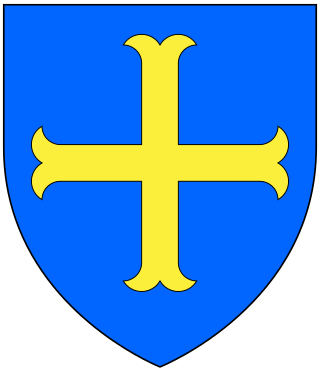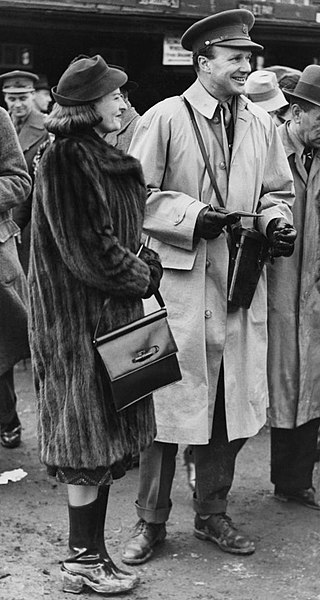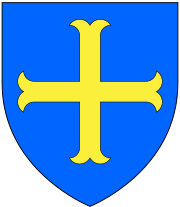
Duke of Westminster is a title in the Peerage of the United Kingdom. It was created by Queen Victoria in 1874 and bestowed upon Hugh Grosvenor, 3rd Marquess of Westminster. It is the most recent dukedom conferred on someone not related to the British royal family.

Earl of Scarbrough is a title in the Peerage of England. It was created in 1690 for Richard Lumley, 2nd Viscount Lumley. He is best remembered as one of the Immortal Seven who invited William of Orange to invade England and depose his father-in-law James II. Lumley had already been created Baron Lumley, of Lumley Castle in the County of Durham, in 1681, and Viscount Lumley, of Lumley Castle in the County of Durham, in 1689. These titles are also in the Peerage of England. The title of Viscount Lumley, of Waterford, was created in the Peerage of Ireland in 1628 for his grandfather Sir Richard Lumley, who later fought as a Royalist in the Civil War.

Earl of Lonsdale is a title that has been created twice in British history, firstly in the Peerage of Great Britain in 1784, and then in the Peerage of the United Kingdom in 1807, both times for members of the Lowther family.

Earl of Rosse is a title that has been created twice in the Peerage of Ireland, both times for the Parsons family. "Rosse" refers to New Ross in County Wexford.

Baron Brownlow, of Belton in the County of Lincoln, is a title in the Peerage of Great Britain. It was created in 1776 for Sir Brownlow Cust, 4th Baronet. The Cust family descends from Richard Cust (1622-1700) of The Black Friars, Stamford, who represented Lincolnshire and Stamford in Parliament. In 1677 he was created a baronet, "of Stamford in the County of Lincoln". He was succeeded by his grandson Richard Cust, 2nd Baronet, who married Anne Brownlow, daughter of Sir William Brownlow, 4th Baronet, "of Humby", Lincolnshire, and sister and sole heiress of John Brownlow, 1st Viscount Tyrconnel, 5th Baronet of Belton House, Lincolnshire. The 2nd Baronet's son Sir John Cust, 3rd Baronet, sat as a Member of Parliament for Grantham and served as Speaker of the House of Commons from 1761 to 1770 and in 1754 inherited the Brownlow estates, including Belton, on the death of his childless maternal uncle Viscount Tyrconnel. His son Brownlow Cust, 4th Baronet, represented Ilchester, Somerset, and Grantham in Parliament and in 1776 was raised to the peerage as Baron Brownlow, "of Belton in the County of Lincoln", chiefly in recognition of his father's services. He was succeeded by his son John Cust, 2nd Baron Brownlow, who had sat as a Member of Parliament for Clitheroe, Lancashire, and also served as Lord Lieutenant of Lincolnshire for many years. In 1815 he was created Viscount Alford, "in the County of Lincoln", and Earl Brownlow, both in the Peerage of the United Kingdom. In 1810 the future 1st Earl had married Sophia Hume, a daughter of Sir Abraham Hume, 2nd Baronet, of Wormleybury, by his wife Lady Amelia Egerton, a great-granddaughter of John Egerton, 3rd Earl of Bridgewater.

William Philip Molyneux, 2nd Earl of Sefton, also known as Lord Dashalong, was a sportsman, gambler and a friend of the Prince Regent.

Molyneux is a French surname. The surname has been linked primarily to a large French family that settled in Lancashire, England. By the 14th century the Molyneux family had split into three main branches: the Lancashire line, who became the Earls of Sefton; the Nottingham line; and the Calais line, from those remaining in France. There was also a branch of the family who were Irish baronets.
Caryll Molyneux, 3rd Viscount Molyneux was an English peer.
This is an incomplete list of people who have served as Custos Rotulorum of Lancashire.

William Philip Molyneux, 4th Earl of Sefton, was a British peer.

There have been three baronetcies created for descendants of the ancient Norman family of Molyneux who were granted extensive estates in Lancashire after the Norman Conquest.

The office of Lord Mayor of Liverpool has existed in one form or another since the foundation of Liverpool as a borough by the Royal Charter of King John in 1207, simply being referred to as the Mayor of Liverpool. The position is now a mostly ceremonial role. The current Lord Mayor of Liverpool is Mary Rasmussen, who has held the post since May 2023.
Charles William Molyneux, 3rd Earl of Sefton, styled Lord Molyneux, was a British Whig politician.
Richard Molyneux, 2nd Viscount Molyneux of Maryborough, was a Royalist officer in the English Civil War
Richard Molyneux, 1st Viscount Molyneux (1594–1636) was an English politician who sat in the House of Commons at various times between 1614 and 1629.

Hugh William Osbert Molyneux, 7th Earl of Sefton was the last Earl of Sefton. His family seats were Croxteth Hall and Abbeystead House in Lancashire; he also held the Wyresdale Forest, an estate in the Forest of Bowland, and Grosvenor Cottage, a property in Culross Street, Mayfair, London.
Sir Richard Molyneux, 1st Baronet (1560–1622) was a member of parliament for Lancashire, Mayor of Liverpool and Receiver-General of the Duchy of Lancaster.
William Molyneux, 7th Viscount Molyneux was a Jesuit priest and member of the peerage of Ireland.

Charles William Hylton Molyneux, 5th Earl of Sefton, was a British peer.

Mary Herbert, Marchioness of Powis, was the wife of William Herbert, 2nd Marquess of Powis and the mother of William Herbert, 3rd Marquess of Powis.













